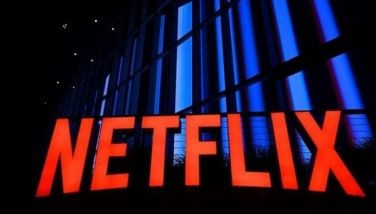Anatomy of speculative bubbles & consequences

MANILA, Philippines - The history of capitalism is punctuated with recurrent episodes of speculative bubbles and busts. These exhibited similar characteristics and varied only in form when they recurred, yet were not recognized as such until its painful aftermath. With modern communication, increased wealth and sophistication, successive mass delusions drew in wider participation, resulting in greater loss of fortune, damage to the economy and ruined lives. Past is mere prologue, it seems and those who do not learn from history are doomed to repeat it, often with dreadful consequences.
Mother of all bubbles and busts
The Great Crash of 2007-08, which started as a US credit & housing crisis, has become the worst global financial and economic crisis since the Great Depression of the 1930s. It occurs on the 10th anniversary of the 1997 Asian financial crisis and the 20th year after the 1987 global stock crash. Nouriel Roubini, NYU Professor of Business and one of the few who saw this crisis coming, said on Bloomberg TV that “US banks in aggregate” are “technically insolvent”. He estimates $3.6 trillion in total US financial system losses, of which $1.8 trillion will pertain to banks and brokers-dealers against capital accounts of $1.4 trillion. The global financial system distress and synchronized recession is causing colossal destruction of wealth affecting all risk asset classes sparing only safe haven assets — gold and US Treasuries.
Similar characteristics and features
Asset bubbles involve the trade of an object or financial instrument in high volume and at increasing prices that are, on later realization, substantially higher than their intrinsic value. Modern day bubbles are but versions of centuries-old episodes. The latter-day rush to invest in commodities, property, club membership shares and hi-tech companies, bear similarities to the “Tulipomania” of 1630, French Mississippi and British South Sea Company bubbles of 1720.
The Philippines was not exempted from speculative bubbles. In the late 1960s, there was a mania in oil and mining stocks. Levitating world prices of copper and a reported local oil find triggered a stock and IPO boom that later collapsed. In the mid-90s, asset bubbles formed in stocks, property and membership shares. The bust came with the ’97 Asian financial crisis. Two-thirds of stock market value was lost. Prices of high-end condominiums and prime land were cut by half. Shares in Manila Golf Club peaked at P52 million and then fell to P10 million.
Many bubbles were offshoots of innovation. Government and economic policy reforms introduced by the US and UK in the 1980s, coupled with great advances in communication and technology gave rise to the “flat” world of Thomas Friedman. The capital markets, free to expand and innovate, flourished; giving rise to the now toxic financial derivatives CDOs and CDS. These can trace their pedigree to the circulation of paper money as legal tender.by the French Banque Royale in 1718. Without adequate backing, the scheme collapsed and caused an economic crisis in France. This was followed shortly by the then novel idea of issuing shares of stock by the Mississippi and South Sea companies that triggered a stock market and IPO boom.
The use of leverage is also not a modern creation. During the Dutch “Tulipomania” that involved an unlikely object – tulips and bulbs, precious possessions were hocked to purchase them, which were then used as collateral to purchase more, in the hope of magnifying gain. Then as now, investors end up owing more than what the asset is worth when the bubble burst.
Finally, there are the investment experts and economic sages whose bullish assertions drown out naysayers and lend confidence and credence to the soundness of escalating prices. Right before the 1929 crash, eminent Yale economist Irving Fisher, who made significant and original contributions in monetary theory and policy through his books “The Purchasing Power of Money” and “The Theory of Interest”, stated that “stock prices have reached what appears like a permanently high plateau”. In the 1990s, writer James Glassman wrote “Dow 36,000”, implying a tripling of stock values. In the recent commodities boom, we had the bullish convictions of investment guru Jim Rogers and Goldman Sachs’ forecast of $200/barrel oil.
Bubbles and scams
Bubbles invariable breed scams. Among stock bubbles that would interest Filipinos is that of Canadian Bre-X gold mining stock as it involved a Filipino — geologist Michael de Guzman. Reports in 1996 of a gold discovery in Borneo, Indonesia with an estimated 200 million ounce deposit propelled the stock from $0.12 to $286.50. This was the ultimate rags-to-riches story that drew in 40,000 investors. On March 19, 1997 de Guzman plunged to his death from a helicopter en route to the mine site. A suicide, declared Indonesian authorities. This was disputed by the family who suspected foul play. Subsequently, a report revealed that ore samples were faked to show high-grade ore and de Guzman was suspected to be behind it. The stock price plunged to 8.5 cents and $3 billion in Bre-X stock value was lost. The Toronto Stock Exchange suffered its worst one-day plunge since the 1987 global stock crash. This is considered one of the biggest scam in Canadian history. Nobody has been convicted to this day.
Why do bubbles keep recurring?
Aren’t free market forces supposed to be self-correcting to equalize any disequilibrium or eliminate pricing distortions? Wasn’t government supposed to intervene with regulations, monetary and fiscal policies to correct excesses or deficiencies? Why do people easily believe when so-called experts say “this time it’s different” and the market’s good times will continue?
The human factor
Explanation in behavioral finance, human psychology, sociology and anthropology were sought to unravel the reason why seemingly rational people, including the wealthy and well-educated, are taken in by speculative bubbles. Apparently, humans are far from rational. MIT’s Dan Ariely’s best-selling study points to humans as “predictably irrational”. A 2002 Nobel laureate for economics, Daniel Kahneman, found “systematic irrationalities” in human behavior. Others see “cognitive biases”. People tend to flock toward the popular, and see and believe in what they want to believe. Many, believing that a trend will continue indefinitely, jump into bandwagons. Complacency sets in with the belief that the one percent chance of disaster, the “Black Swan” of Nassim Taleb, could not happen. Consequently, the automated risk management systems used widely by financial institutions, such as Value at Risk (VaR) models, did not adequately quantify the risk of that “improbable” one percent, nor could credit rating agencies’ rating systems factor the impact of falling realty prices on securitized mortgage debt, which received their highest credit rating.
Bubbles unique feature of free market economy
Karl Marx was said to have stated that “Owners of capital will stimulate the working class to buy more expensive goods, houses and technology, pushing them to take more and more expensive credits, until their debt becomes unbearable. The unpaid debt will lead to bankruptcy of banks, which will have to be nationalized and the State will have to take the road which will eventually lead to communism.” Politics aside, this is a close description of current events. Alan Greenspan, former chairman of the US Fed, wrote in his memoir “The Age of Turbulence” that asset bubbles cannot be prevented. During his US Congressional testimony on October 20, 2008, Greenspan declared that there is a “flaw in the model”. Apparently, the liberty in a free market system to control factors of production and commerce to create wealth can be subverted by greed and hubris, resulting in cycles of boom and bust, episodes of inflation and deflation.
Bubbles – the painful aftermath
The Philippines, dependent on OFW earnings and exports to fuel the economy, is now feeling the effects of the crisis. As the global economic recession deepens, GDP growth forecasts have been reduced from 4.7 percent (NEDA) to an anemic 2.25 percent (IMF). OFWs are being sent home from hard-hit export-dependent economies. Layoffs from electronic and automotive parts sectors, are mounting. DOLE estimates 200,000 jobs will be lost. What little our government can do is overshadowed by our dependence on the economies and labor markets of our trading partners.
Unprecedented economic stimulus and bank bailout programs are being employed to unfreeze credit markets and jumpstart flailing economies. Owing to this, US President Obama has warned of the real prospect of multi-year trillion dollar fiscal deficits; likely requiring the US Treasury to issue up to $2 trillion in debt in 2009, on top of $10 trillion in debt as of Sept-2008. Other countries will follow suit. The US Fed is also considering directly purchasing US treasuries, which we suspect is due to the huge oncoming supply and reluctance or diminished purchasing capacity of large buyers such as China, Japan, and the oil producers. Bloomberg estimates that the Fed, US Treasury and Federal Deposit Insurance Corp. “have lent or spent almost $3 trillion over the past two years and pledged up to $5.7 trillion more... The pledges amount to almost two-thirds of the value of everything produced in the US last year.” These are staggering sums.
Unfortunately, fixes have historically caused future crises through the law of “unintended consequences” that would again buffet the Philippines. William Fleckenstein in his “Greenspan’s Bubbles”, theorizes that Greenspan’s easy credit & low interest rates in 2002-2005, created today’s burst credit and housing bubbles. We fear the borrowing spree of governments may further crowd out fund-starved companies and developing countries from credit markets. Worse, it may lead to high inflation, devalued currencies and higher interest rates. We suspect the US Fed’s moves will require printing new money, which will lead to inflation per historical precedents. Another consequence of higher interest rates will be the sharp fall of US treasury debt prices from their current bubble-like levels that will again cause capital losses.
When the chickens come to roost as they eventually will, and inflation rears its ugly head, there will be hell to pay. The US Fed and Treasury have the daunting tasks of juggling policy to engineer higher rates to prevent an inflation spiral while keeping prices of US treasury debt and the dollar from crashing down. The public’s vote of confidence, or lack of it, will be reflected in the soaring price of gold, the ultimate store of value when confidence in paper money is lost.
A crash after the crash? We pray not.
(The author, a certified public accountant, is a property developer and former chairman and president of the Subdivision and Housing Developers Association (SHDA), member of the Management Association of the Phils. (MAP) and Financial Executives of the Phils. (FINEX). He presented an analysis of the 1997 Asian Financial Crisis at a forum by the Human Development Network on Nov. 4, 1998; published “A Tax-less Economic Growth” on Oct. 22, 2004, an analysis of the principal cause of the drastic decline in fiscal revenues that was cited by the Asian Development Bank in its 2004 Philippine Yearend Economic Review and “Is the Economy Overtaxed” on Dec. 1, 2004; featured in “Financial Analyst Proposes Novel Fiscal Measures” on Sept. 30, 2005, “The 1997 Asian Financial Crisis and 10th Anniversary Market Crashes, April 2007, “The Panic of 2007”, Sept. 3, 2007, in The Philippine STAR. Signs of Market Inflection Point after Flirting with Financial Armageddon, April 30, 2008, Philippine STAR and the quarterly July 4, 2008 issue of Zurich-based International Association of Financial Executives Institute.)
For comments: [email protected]
- Latest
- Trending






























